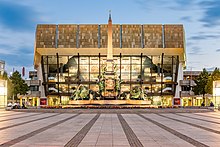

Gewandhaus is a concert hall in Leipzig, the home of the Leipzig Gewandhaus Orchestra. Today's hall is the third to bear this name; like the second, it is noted for its fine acoustics.


Gewandhaus is a concert hall in Leipzig, the home of the Leipzig Gewandhaus Orchestra. Today's hall is the third to bear this name; like the second, it is noted for its fine acoustics.
The first concert hall was constructed in 1781 by architect Johann Carl Friedrich Dauthe inside the Gewandhaus, a building used by cloth (garment) merchants. Beethoven's Piano Concerto No. 5 (The Emperor Concerto) premiered here in 1811. Felix Mendelssohn is particularly associated with the first Gewandhaus, of which he was director from 1835.
Other well-known works which premiered at the Altes Gewandhaus include:
The Altes Gewandhaus was used for concerts until 1884, sporadically between then until 1886. Despite several expansions, it eventually became too small to accommodate the burgeoning number of concertgoers from Germany's newly emergent middle class. Thus between 1893 and 1896 it was repurposed, partially demolished, and refitted to form an annexe of the Städtisches Kaufhaus.

The second Gewandhaus was designed by Martin Gropius. It opened on 11 December 1884, and had a main concert hall and a chamber music hall. During this era the Gewandhaus was directed by some of the most renowned conductors of the day, such as Arthur Nikisch, Wilhelm Furtwängler and Bruno Walter.
It was severely damaged in the firebombing of Leipzig in World War II during two separate raids on 4 December 1943 and 20 February 1944. Despite initial plans for rebuilding, the East German government deemed the ruins too structurally unsound, and they were demolished on 29 March 1968. The site was used as a carpark for several decades, until the Humanities faculty of Leipzig University was opened on the grounds in 2002.

The third and current Gewandhaus on Augustusplatz and the eastern part of the inner city ring road opened on 8 October 1981, two hundred years after the Leipzig Gewandhaus Orchestra moved into the original hall. The foundation stone was laid by conductor Kurt Masur on 8 November 1977. The architect was Rudolf Skoda, who like his predecessor Dauthe was also a native of Leipzig. The design of the hall carefully took into consideration its precedents' reputation for excellent acoustics. During construction, the hall was even filled up several times with soldiers of the East German Nationale Volksarmee to test its sound quality at full capacity.
During the Autumn of Nations in 1989, the Gewandhaus became a platform for political dissent against the Communist authorities, as Masur opened up the hall for public discussion on the future and reform of the GDR (the so-called "Gewandhaus Talks").
Today's Gewandhaus has a seating capacity of 1900, and features a Schuke concert organ with 6,845 pipes.

Joseph Joachim was a Hungarian violinist, conductor, composer and teacher who made an international career, based in Hanover and Berlin. A close collaborator of Johannes Brahms, he is widely regarded as one of the most significant violinists of the 19th century.

Kurt Masur was a German conductor. Called "one of the last old-style maestros", he directed many of the principal orchestras of his era. He had a long career as the Kapellmeister of the Leipzig Gewandhaus Orchestra, and also served as music director of the New York Philharmonic. He left many recordings of classical music played by major orchestras. Masur is also remembered for his actions to support peaceful demonstrations in the 1989 anti-government demonstrations in Leipzig; the protests were part of the events leading up to the fall of the Berlin wall.

The Piano Concerto No. 1 in D minor, Op. 15, is a work for piano and orchestra completed by Johannes Brahms in 1858. The composer gave the work's public debut in Hanover, the following year. It was his first-performed orchestral work, and his first orchestral work performed to audience approval.

Felix Mendelssohn's Violin Concerto in E minor, Op. 64, is his last concerto. Well received at its premiere, it has remained among the most prominent and highly-regarded violin concertos. It holds a central place in the violin repertoire and has developed a reputation as an essential concerto for all aspiring concert violinists to master, and usually one of the first Romantic era concertos they learn. A typical performance lasts just under half an hour.
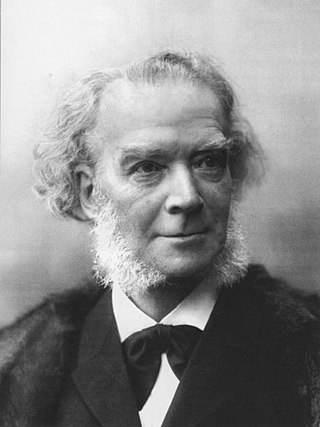
Carl Heinrich Carsten Reinecke was a German composer, conductor, and pianist in the mid-Romantic era.

Ferdinand (von) Hiller was a German composer, conductor, pianist, writer and music director.
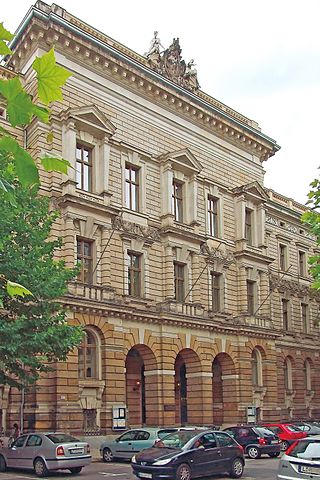
The University of Music and Theatre "Felix Mendelssohn Bartholdy" Leipzig (German: Hochschule für Musik und Theater "Felix Mendelssohn Bartholdy" Leipzig) is a public university in Leipzig (Saxony, Germany). Founded in 1843 by Felix Mendelssohn as the Conservatorium der Musik (Conservatory of Music), it is the oldest university school of music in Germany.

Ferdinand Ernst Victor Carl David was a German virtuoso violinist and composer.
Misha Dichter is an American pianist.
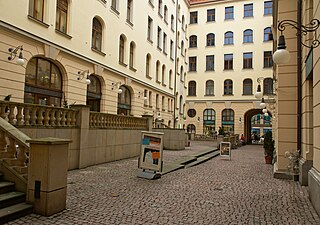
The Städtisches Kaufhaus in Leipzig, designed by Rayher, Korber and Müller, was constructed from 1894 to 1901.
The Orchestre des Champs-Élysées is an orchestra that specializes in the performance of music from the period from roughly 1750 to the early twentieth century, that is, it covers the period from the flourishing of Haydn to that of Mahler. It performs each work on instruments from the period of the composer's lifetime.

The Leipzig Gewandhaus Orchestra is a German symphony orchestra based in Leipzig, Germany. The orchestra is named after the concert hall in which it is based, the Gewandhaus. In addition to its concert duties, the orchestra also performs frequently in the Thomaskirche and as the official opera orchestra of the Leipzig Opera.
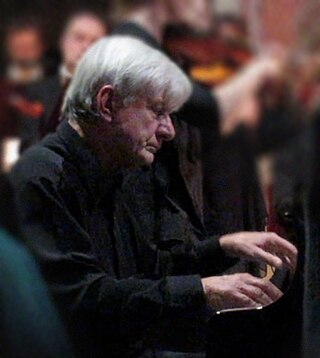
Peter Rösel is a German concert pianist.

Kirill Troussov in Saint Petersburg, is a German violinist and violin teacher based in Munich, Germany.
The Harpsichord Concerto in D minor, BWV 1052, is a concerto for harpsichord and Baroque string orchestra by Johann Sebastian Bach. In three movements, marked Allegro, Adagio and Allegro, it is the first of Bach's harpsichord concertos, BWV 1052–1065.
Karl Ottomar Treibmann was a German composer and music educator. From 1981 until his retirement in 2001, he was professor of music theory and Tonsatz at the Leipzig University. He was one of the representatives of modernity in the German Democratic Republic, whose great major works can be found in the areas of opera, symphony and chamber music.
Hans-Christian Bartel was a German violist and composer.
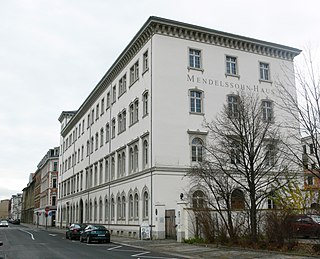
Mendelssohn House is a museum in Leipzig in Saxony, Germany. The composer Felix Mendelssohn lived here from 1845 until his death in 1847; it now contains a collection about the life and work of the composer.
Jürnjakob Timm is a German cellist and university lecturer. He played for over forty years in the Leipzig Gewandhaus Orchestra and the Gewandhaus Quartet.
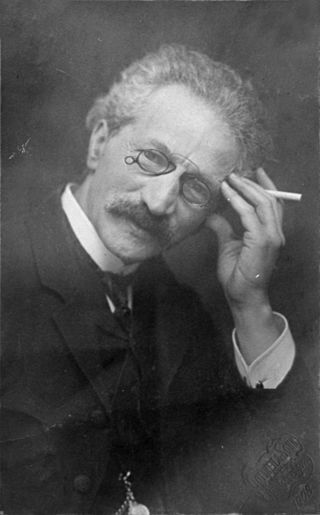
Max Brode was a German violinist and conductor. Über 41 Jahre prägte er das Musikleben von Ostpreußens Provinzialhauptstadt.